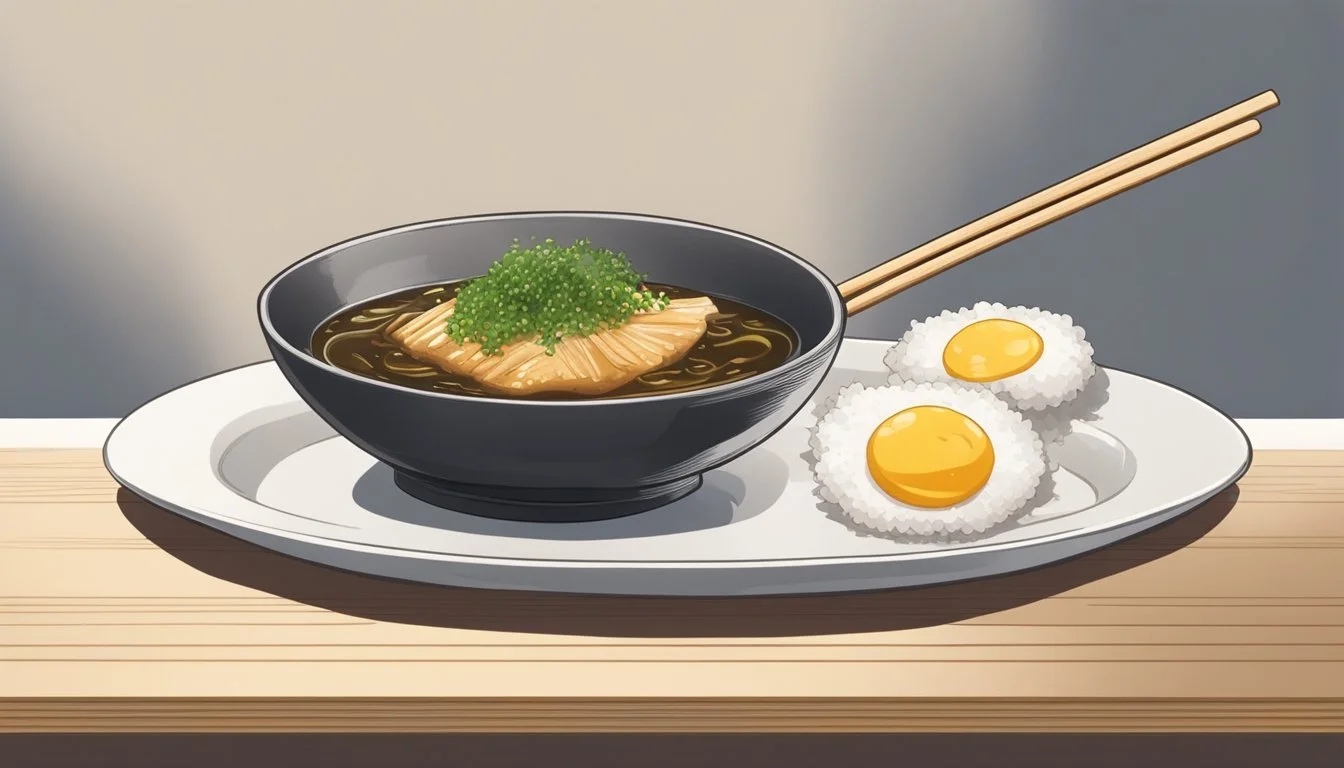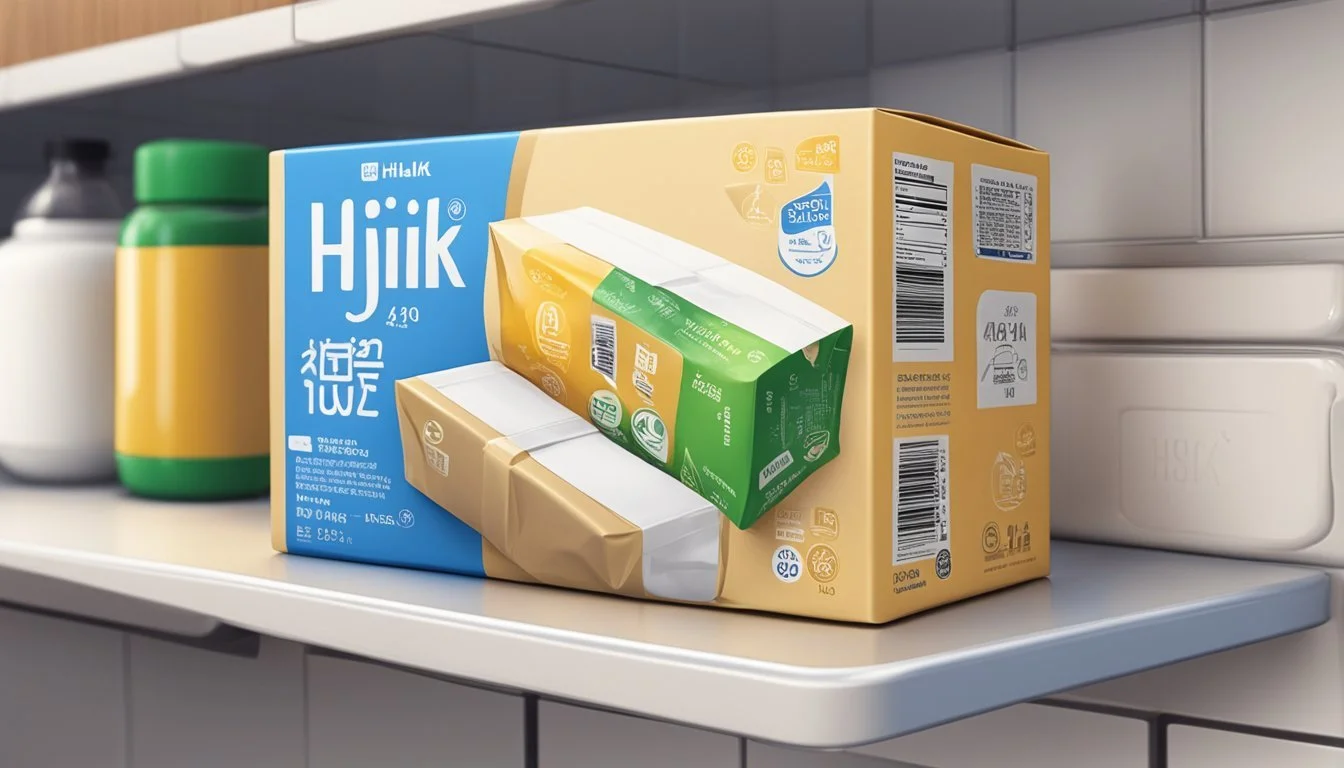Does Hijiki Go Bad?
Shelf Life and Storage Tips
Hijiki, a type of seaweed native to the rocky coastlines of East Asia, has been an integral part of Japanese cuisine for centuries. Known for its distinctive black and shredded appearance, hijiki is not only rich in dietary fiber and essential minerals but also known for its versatility in various dishes. This seaweed can add nutritional value and texture to meals, whether it's in a classic hijiki salad or mixed into steamed dishes.
Like all foods, hijiki does have a shelf life and can go bad. When stored properly, dried hijiki can last for an extended period. It should be kept in a cool, dry place, away from direct sunlight to maintain its quality. However, once rehydrated and cooked, hijiki should be consumed within a few days if kept refrigerated.
The Japanese principle of ichiju sansai—one soup and three sides—often incorporates hijiki, demonstrating its staple status in Japanese culture. Ensuring proper storage and timely consumption not only preserves its flavor but also its nutritional benefits, making hijiki a valuable addition to a balanced diet.
Hijiki Basics
Hijiki is a type of seaweed primarily found along the coasts of Japan, Korea, and China. This black, shredded sea vegetable is a staple in Japanese cuisine, known for its unique texture and rich nutritional content. The section covers what hijiki is, its culinary applications, and how it compares to other sea vegetables.
What Is Hijiki?
Hijiki is a type of seaweed that grows wild along the rocky coastlines of Japan, Korea, and China. Scientifically known as Sargassum fusiforme, it is characterized by its dark, almost black color and shredded appearance.
Before consumption, hijiki is typically dried and needs to be rehydrated by soaking in water. This process increases its volume two to three times. Once rehydrated, hijiki has a slightly sweet flavor and firm, chewy texture.
Culinary Uses in Japanese Cuisine
In Japanese cuisine, hijiki often appears in side dishes, most notably in the dish called "hijiki no nimono," where it is simmered with soy sauce, mirin, and sometimes vegetables like carrots and edamame.
Hijiki is also added to salads, soups, and rice dishes, where it contributes both flavor and nutritional benefits. It is high in fiber, calcium, iron, and essential vitamins, making it a common ingredient in health-conscious Japanese meals. The principle of ichiju sansai (one soup, three sides) often features hijiki as a side component, emphasizing its versatility and nutritional value.
Comparison with Other Sea Vegetables
When compared to other sea vegetables like wakame and nori, hijiki boasts a unique texture and nutritional profile. Unlike wakame, which has a smoother texture and is commonly used in soups, hijiki is firmer and adds a distinct chewiness to dishes.
Additionally, hijiki has higher fiber content than nori, making it a preferred choice for dishes where texture is important. While both nori and wakame are often used in sushi or salads, hijiki is more frequently found in simmered dishes or as a secondary ingredient due to its robust flavor.
By understanding these basics of hijiki, consumers can better appreciate its role in various culinary contexts and make informed decisions about how to incorporate this nutritious sea vegetable into their diets.
Nutritional Profile
Hijiki seaweed boasts a rich nutritional profile. It is abundant in essential minerals like iron, calcium, and iodine, and it contains significant amounts of dietary fiber and vitamin K. This composition aids in cholesterol management and supports digestive health.
Mineral Content
Hijiki is a powerhouse of essential minerals. It contains high levels of iron, which is crucial for the formation of red blood cells and preventing anemia. Calcium, another prominent mineral in hijiki, supports bone health and strength. Additionally, hijiki is an excellent source of magnesium, which plays a key role in muscle function and energy production.
The iodine content in hijiki helps regulate thyroid function, which is essential for maintaining a healthy metabolism. Furthermore, hijiki contains potassium, which helps in maintaining proper fluid balance and muscle contractions. The combination of these nutrients makes hijiki a valuable addition to the diet.
Vitamins and Fiber
Hijiki is rich in vitamin K, essential for blood clotting and bone metabolism. A serving of hijiki provides a substantial amount of this vitamin, contributing to overall health benefits. Additionally, hijiki's significant dietary fiber content aids in digestive regularity and overall digestive health.
Fiber in hijiki helps promote a healthy gut by increasing bowel movements and supporting beneficial gut bacteria. This reduces the risk of digestive issues such as constipation. The presence of fiber also helps in managing blood sugar levels by slowing down the absorption of sugars into the bloodstream.
Benefits for Cholesterol and Digestive Health
Regular consumption of hijiki contributes to lowering cholesterol levels. The dietary fiber in hijiki binds with cholesterol in the digestive system, preventing its absorption and reducing overall cholesterol levels. This process helps in maintaining cardiovascular health and decreasing the risk of heart disease.
Hijiki's rich fiber content also enhances digestive health. It promotes regular bowel movements and helps prevent constipation. The combination of high fiber and mineral content in hijiki supports a healthy digestive tract and improves overall gut health. This multi-faceted benefit highlights hijiki's role in maintaining a healthy lifestyle.
By incorporating hijiki into one's diet, individuals can enjoy numerous health benefits stemming from its rich nutritional profile, helping to support both cholesterol management and digestive health.
Preparation and Cooking
Preparing hijiki involves rehydrating the dried seaweed, boiling it, and seasoning it with various ingredients to enhance its flavor. The following sections break down this process into clear, easy-to-follow steps.
How to Rehydrate Dried Hijiki
To rehydrate dried hijiki, soak it in water for about 30 minutes. This process allows the seaweed to expand and soften, making it easier to cook.
Use plenty of water, as hijiki will double or triple in size. After soaking, drain and rinse the hijiki to remove any excess salt or impurities.
Boiling and Seasoning Techniques
After rehydration, boiling the hijiki is essential to prepare it for consumption. Simmer the hijiki in water for about 10 minutes, then discard the water to reduce the arsenic content.
Next, sauté the hijiki with a little sesame oil, soy sauce, and mirin. These ingredients will enhance its sweet and earthy flavor. You can also add sugar and other seasonings based on taste preferences.
Recipe Ideas
Hijiki can be used in a variety of dishes. It pairs well with ingredients such as carrots, soybeans, and chicken.
For a simple hijiki salad, mix the cooked hijiki with shredded carrots, soybeans, and a dressing made from soy sauce and sesame oil. Another popular dish is hijiki onigiri, where the hijiki is mixed with rice and shaped into balls or triangles.
Sprinkle some sesame seeds on top for added flavor. This seaweed also works well in scrambled eggs or as a side dish to a main meal.
Health Considerations
Hijiki seaweed can be a nutritious addition to one's diet, but it is important to be aware of certain health considerations, including the presence of arsenic, guidelines for safe consumption, and its potential impact on the thyroid gland.
The Issue of Arsenic
Hijiki seaweed has been found to contain inorganic arsenic, a toxic substance that can pose health risks when consumed in large amounts. Various health authorities, including the Food Standards Agency (FSA) in the UK, have raised concerns about the potential arsenic content in hijiki.
Inorganic arsenic exposure can lead to various health issues, including skin lesions, cardiovascular diseases, and an increased risk of cancer.
Because of these risks, it is advised to limit the consumption of hijiki to reduce potential exposure. Consumers should check with relevant food safety regulations in their country to follow specific guidelines on hijiki consumption.
Guidelines for Safe Consumption
Moderation is key when consuming hijiki seaweed to reap its health benefits while avoiding potential risks. Many experts recommend consuming hijiki only occasionally. Regular eating should be avoided to minimize exposure to inorganic arsenic.
When purchasing hijiki, it is crucial to source from reputable suppliers who adhere to safety regulations and guidelines. Procedures such as thorough washing and soaking can also help reduce mineral content, including arsenic, before cooking.
For specific dietary advice, individuals should consult health professionals, particularly if they have any existing health conditions or concerns regarding hijiki.
Potential Impact on Thyroid Gland
Hijiki contains high levels of iodine, which plays an essential role in thyroid function. While adequate iodine is necessary for thyroid hormone production, excessive consumption can lead to iodine toxicity.
Excessive iodine intake may disrupt thyroid activity, potentially causing conditions like hyperthyroidism or hypothyroidism. To avoid impacting the thyroid gland, it is important to consume hijiki in moderation.
Individuals with thyroid disorders should be especially cautious and seek medical advice before incorporating hijiki into their diet. Monitoring iodine intake from other dietary sources is also crucial for maintaining balanced thyroid function.
Storage and Shelf Life
Proper storage of hijiki is essential to maintain its quality and extend its shelf life. This section covers the best storage conditions, how to recognize spoilage, and tips to maximize freshness.
Optimal Storage Conditions for Hijiki
Dried hijiki should be kept in a cool, dry place away from direct sunlight. An unopened package can last up to six months if stored correctly.
After opening, it is advisable to store hijiki in an airtight container to prevent moisture absorption, which can lead to spoilage. Refrigeration is recommended to further preserve its quality.
Temperature: Ensure the storage area remains below 70°F (21°C). High temperatures can degrade the nutritional content and taste of the hijiki.
Packaging: Always check the condition of the packaging when purchasing dried hijiki. Vacuum-sealed packages usually have a longer shelf life.
Signs of Spoilage
Spoiled hijiki may show several signs that indicate it is no longer safe to consume:
Discoloration: Fresh dried hijiki is usually dark brown to black. Any noticeable color changes can be a sign of spoilage.
Odor: A strong, off-putting smell is a clear indicator that hijiki has gone bad. It should have a mild, seaweed-like aroma.
Texture: If the hijiki becomes mushy or slimy after rehydrating, it may be spoiled. Properly dried hijiki should retain a firm texture when soaked in water.
Checking these signs before consumption helps avoid any potential health issues.
Maximizing Freshness and Longevity
To ensure hijiki remains fresh for the longest possible time, follow these practices:
Use Airtight Containers: Transfer dried hijiki to an airtight container immediately after opening the package to reduce exposure to air and moisture.
Refrigeration: Store hijiki in the refrigerator, especially in humid conditions. This helps slow down any spoilage processes.
Check Expiry Dates: Be mindful of the use-by dates on packaging. Consuming hijiki within the recommended period ensures the best quality and safety.
Regular Inspection: Periodically inspect stored hijiki for any signs of spoilage, such as changes in color, odor, or texture.
Adhering to these guidelines helps maintain the quality and safety of hijiki, ensuring it remains a healthy addition to meals.






